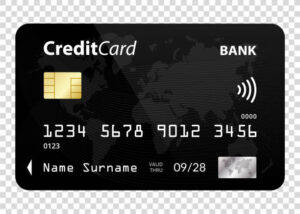Tips
Maximizing Credit Card Benefits in the USA: 2024 Guide
By
In the modern financial landscape of the United States, credit cards are no longer just tools for convenience—they’ve evolved into powerful financial instruments that offer various perks, including cashback rewards, travel miles, and 0% interest offers.
However, understanding how to choose the right credit card can be daunting, especially with so many options available in 2024.
This guide will explore the essential things to know about credit cards in the U.S., how they work, and what to look for when choosing the best card for your needs. Whether you’re looking to improve your credit score, maximize rewards, or find a card with a low interest rate, this article will help you make inform

Credit cards stacked on white background
ed decisions and take full advantage of what credit cards have to offer.
How Credit Cards Work
Credit cards allow consumers to borrow money from a bank or financial institution to make purchases. Each card comes with a credit limit, which is the maximum amount you can borrow. When you make a purchase using a credit card, you are essentially taking out a short-term loan. At the end of each billing cycle, you’ll receive a statement that shows your total balance and the minimum payment required.
Paying your balance in full each month allows you to avoid interest charges. However, if you carry a balance, the credit card issuer will charge you interest on the unpaid amount. This interest can accumulate quickly, so it’s crucial to manage your payments responsibly.
Types of Credit Cards in the USA
Choosing the right credit card depends on your financial habits and goals. Here are the most common types of credit cards available in the U.S.:
1. Rewards Credit Cards
Rewards credit cards are designed to offer incentives for everyday purchases. Cardholders earn points, miles, or cashback for every dollar spent. These rewards can be redeemed for travel, gift cards, or even statement credits.
- Best for: Frequent spenders who want to maximize their rewards.
- Popular options: Chase Sapphire Preferred, American Express Gold Card, Capital One Venture.
Best rewards credit card, credit card with highest cashback, top rewards credit cards USA
2. Cashback Credit Cards
Cashback cards offer a percentage of your spending back in cash. Some cards provide a flat cashback rate on all purchases, while others offer higher cashback rates in specific categories such as groceries, gas, or dining.
- Best for: People who want simple rewards without dealing with points or miles.
- Popular options: Citi Double Cash, Blue Cash Preferred from American Express.
Best cashback credit card USA, high cashback credit cards, top 5 cashback cards USA
3. Balance Transfer Credit Cards
Balance transfer cards are ideal for individuals who want to consolidate debt. These cards offer low or 0% interest rates for an introductory period, typically 12 to 21 months. This allows you to transfer your existing credit card debt to the new card and pay it off without accruing interest.
- Best for: People with existing credit card debt who want to save on interest.
- Popular options: Citi Simplicity Card, Chase Slate Edge.
Best balance transfer credit card, 0% APR balance transfer cards, no interest credit cards USA
4. Travel Credit Cards
Travel credit cards allow you to earn points or miles that can be redeemed for flights, hotel stays, and other travel-related expenses. These cards often come with travel perks like free checked bags, airport lounge access, and travel insurance.
- Best for: Frequent travelers who want to maximize their travel-related spending.
- Popular options: Chase Sapphire Reserve, American Express Platinum Card.
5. Secured Credit Cards
Secured credit cards require a cash deposit that serves as collateral for your credit line. These cards are designed for individuals with no credit history or those who need to rebuild their credit. While they don’t offer as many perks as traditional credit cards, they are an excellent way to establish or improve your credit score.
- Best for: People looking to build or rebuild their credit.
- Popular options: Discover it Secured, Capital One Platinum Secured.

Happy young woman paying bill with a contactless credit card in a restaurant. Female smiling holding a creditcard and giving a payment transaction to the cashier. High quality photo
How to Choose the Best Credit Card for Your Needs
Choosing the right credit card can be overwhelming, but it becomes easier when you understand your own financial habits and goals. Here are a few factors to consider:
1. Interest Rates (APR)
The interest rate on a credit card is known as the annual percentage rate (APR). If you plan to carry a balance from month to month, it’s important to choose a card with a low interest rate to avoid high finance charges. However, if you pay your balance in full every month, the interest rate becomes less important.
2. Annual Fees
Some credit cards charge an annual fee, which can range from $25 to over $500. Cards with high annual fees often come with extra perks, such as higher rewards rates or travel benefits. If you don’t use the card frequently, it may not be worth paying an annual fee.
3. Rewards Structure
If you’re choosing a rewards card, it’s important to select one that matches your spending habits. For example, if you spend a lot on groceries and dining, a card that offers higher cashback rates in those categories would be beneficial.
4. Credit Score Requirements
Each credit card has its own minimum credit score requirement. Some cards are designed for people with excellent credit, while others are more accessible for people with fair or bad credit. It’s important to check your credit score before applying, as getting rejected for a card can negatively impact your score.

Tips for Using Your Credit Card Responsibly
While credit cards offer numerous benefits, they can also lead to financial trouble if not used responsibly. Here are a few tips to ensure you stay on top of your finances:
1. Pay Your Balance in Full
Always aim to pay your credit card balance in full every month. This helps you avoid interest charges and prevents debt from accumulating.
2. Set a Budget
Using a credit card can make it easy to overspend, so it’s important to set a budget and stick to it. Treat your credit card like a debit card—only charge what you can afford to pay off.
3. Monitor Your Credit Score
Keeping track of your credit score is crucial, especially if you plan to apply for loans or other credit cards in the future. Many credit card issuers offer free credit monitoring services.
4. Take Advantage of Rewards
If you have a rewards credit card, make sure you’re taking full advantage of the benefits. Use your card for everyday purchases, but always pay off the balance to avoid interest charges.
Conclusion
Credit cards can be an invaluable financial tool when used responsibly. Whether you’re looking to earn rewards, travel for free, or pay down debt, there’s a credit card out there for you. By understanding the different types of credit cards and how to choose the right one, you can make informed decisions that maximize your financial benefits in 2024.






